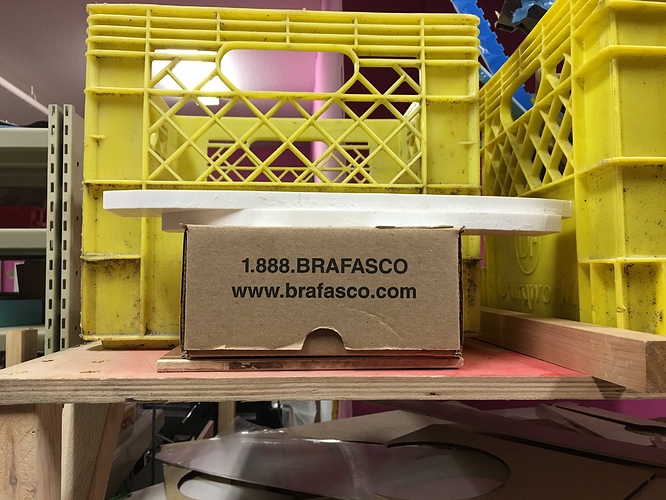Hi all, I brought in some small scraps of Corian for anybody to use in their projects and to test and evaluate for laser cutting. The box has a bunch of close to being round blanks suitable for further machining on the lathe or cnc. I believe that Corian is a very dense form of acrylic so I suspect it is a suitable candidate for the laser.
Corian is the brand name for a solid surface material created by E. I. du
Pont de Nemours and Company (DuPont). Its primary use is as a
countertop/benchtop surface, though it has many other applications. It is
composed of acrylic polymer and alumina trihydrate (ATH), a material
derived from bauxite ore.
Looks like it cuts very well with laser, googled it and saw lots of images showing it being used. Is this material approved for use with the hack space’s laser CNC?
@Logan_Buchy, @garthomite, @rsim, request for assessment of Corian on laser cutter. Online, I have found many links to services that advertise as being able to laser cut Corian, and they speak nothing about downsides, but here are a couple links that have some negative things to say about it. These links were much harder to find than all of the positive ones:
Also, I haven’t vetted this list, but the ATX Hackerspace materials list is much more extensive than the VHS Materials Wiki. It would be great if someone with authority could assess the materials and add them to our list (whether banned or permitted).
For a proper assessment, the material safety data sheet (MSDS) is far more useful as it discloses the outcomes of combustion and breakdown under high temperatures
A good source for information about chemical hazards: NIOSH Pocket Guide to Chemical Hazards
I have reviewed the MSDS for Dupont’s Corian (Revision 04/13/2011)676799.pdf (65.6 KB)
, there are three hazards from combustion:
-
Butyl acrylate: ( From Wikipedia and the NIOSH Pocket Guide to Chemical Hazards ) People can be exposed to butyl acrylate via breathing it in, skin absorption, swallowing it, or eye contact. Symptoms of exposure include irritation of the eyes, skin, and upper respiratory tract; sensitization dermatitis; corneal necrosis; nausea; vomiting; diarrhea; abdominal pain; cough; sore throat; pulmonary edema; and difficulty breathing (dyspnea).
-
n-Butyl acrylate (another name for Butyl acrylate compounds)
-
Methyl methacrylate monomer: Irritation of skin, eyes, nasal cavities. Wash skin with water, move affected person to fresh air.
The Methyl methacrylate is manageable, however, the Butyl acrylate is a different story. If we had activated carbon filters, I would say we should allow Corian in the Laser. Since we don’t have such filters, I’m going to leave it up to the LCC to determine how Butyl acrylate compares with the chemical byproducts of currently approved materials.
Not exactly the issue here, but related : would there be a reason not to make the cover more airtight? It seems to leak quite a bit, even when it’s not extremely smoky inside, and the venting is working fine.
The extraction fan is supposed to create a negative air pressure differential inside the cabinet. The entire enclosure is fairly open, so making the lid air tight may or may not help. I suspect that the exhaust fan may not be powerful enough (or the filters need changing … again).
Anybody from the LCC reading this thread?
That’s actually what I was assuming, but even when you can see the smoke being sucked efficiently into the vent, you get pretty intoxicated staying in front of the working cutter for more than 20 mn…
I wonder if the leak is somewhere else (such as along the exhaust duct going outside) or the fumes are being sucked back in through the window fans. I’ll take a look around next time I’m using the laser.
FWIW, the filters were changed just a few weeks ago so highly unlikely they
are clogged already. Not impossible… but unlikely
How far from the window is the exhaust vent for the laser?
They’re 8-10 feet apart, along the same wall.
Its very likely that a loop is occurring here, with fumes just being sucked back into the space.
I raised that issue almost 2 months ago, as I experienced it at least twice and it was a significant issue; but it has been much better since. Maybe it was a bad combination of wind, open door, open bay door…who knows
There is a sign posted by the laser cutter indicating that the operator should make sure to turn off the Air Conditioner via the thermostat on the wall before using the Laser Cutter as it sucks the Laser cutter’s fumes back into the space. A good VHS member would then turn the A/C back on once they were finished with the Laser cutter.
